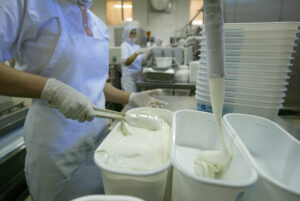By Ryan Maus
FSMA legislation (21 CFR §117.160) requires that preventive controls be validated to assure that they are appropriate to control the hazards identified in the food safety plan. Generally, validation occurs:
- Prior to, or within 90 days of implementation of the food safety plan
- Whenever a change to a control measure(s) could impact its ability to control the hazard(s)
- Whenever a reanalysis of the food safety plan reveals the need to do so
Concerning reanalysis of the food safety plan, according to FSMA legislation (21 CFR §117.170), this is required at least once every 3 years or:
- Whenever new information about potential hazards associated with the food arise
- Whenever appropriate after an unanticipated food safety problem
- Whenever you find that a preventive control, combination of preventive controls, or the food safety plan as a whole is ineffective
So what is considered a significant product/process change? Examples from FSPCA’s PCQI training manual include:
- Raw material changes, including a new supplier (e.g. change in viscosity, moisture levels, particle size; new pathogen hazard identified; increased microbial load)
- Product or process changes (e.g. reduced water activity, changes in operating parameters, new equipment, equipment is moved)
- Increasing production volumes that lead to extended run times, changes in bed depth, increased volumes of material in chambers
- Adverse finding during review or observation of a recurring deviation (i.e. may suggest the validation is no longer adequate)
- Emerging scientific information on hazards or control measures
- Changes in consumers profiles and handling (e.g. marketing to children, infants, or an immunocompromised population)
Often, a food producer must consider changes to equipment, such as a heating element, and whether this would impact the equipment’s efficacy in controlling an identified hazard. The most conservative approach to demonstrate the preventive control’s efficacy would be to revalidate the process. However, another approach is to conduct a heat distribution study to verify that the heat distribution did not change significantly in a way that areas of the roaster see lower temperatures than when the roaster was initially validated. This could include collecting data that supports the initial validation, for example, temperature distribution data pre/post heating element replacement. If the analysis of this data indicates the same temperature profile, then you may be able to conclude that the reanalysis does not indicate the need for a full validation study. If the temperature profile has changed, then some additional study would be warranted.






